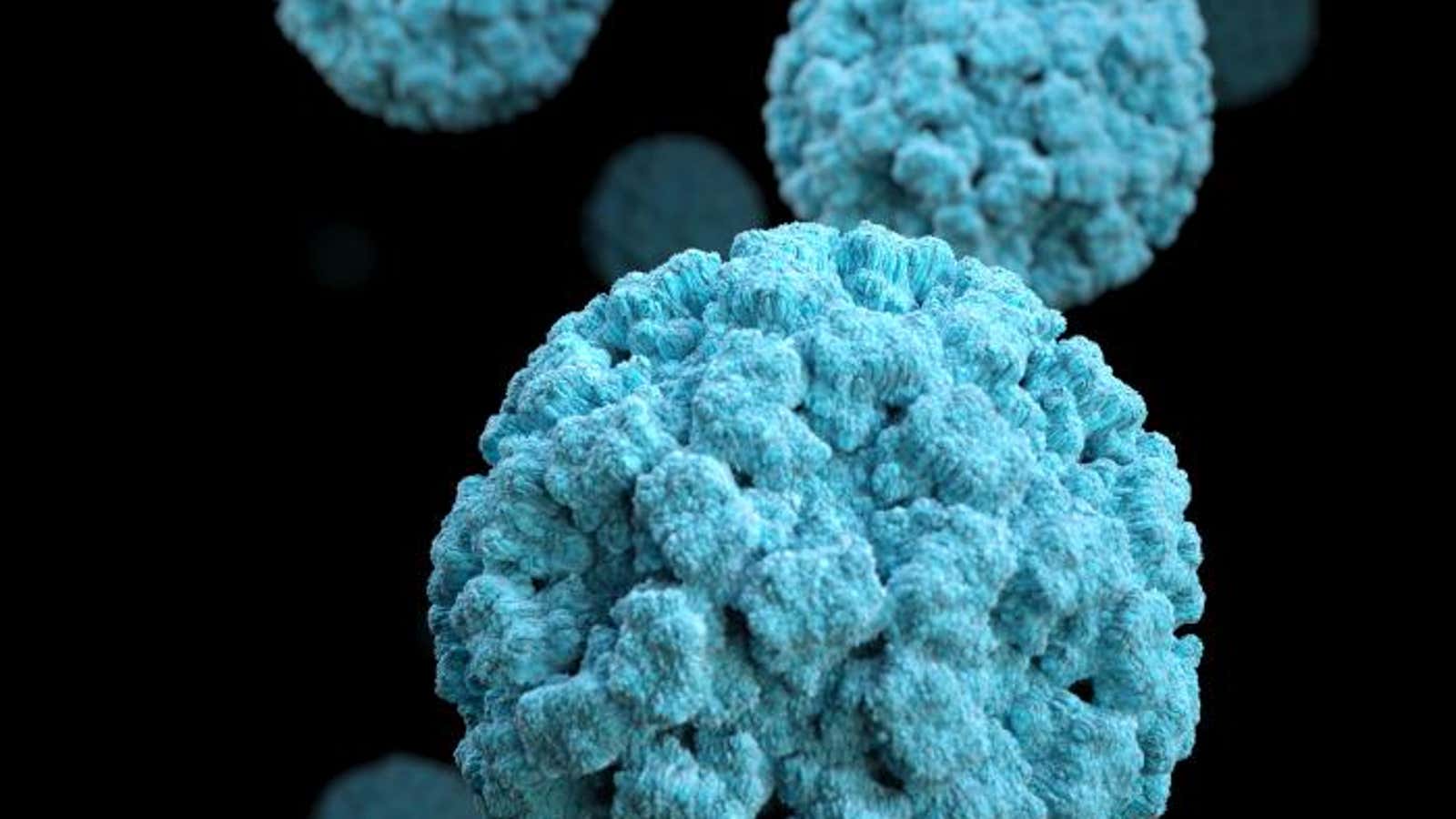A single virus sneaks into a cell, takes over the cell’s equipment, and reproduces itself billions of times. Then, these copies explode through the cell wall, killing it on their way to infect others. After a number of cycles, the owner of those cells starts to feel sick.
That’s how scientists have long believed all infectious viruses to work. New research, however, shows that, for certain viruses, the infection process may be more sinister. In a paper published (paywall) Aug. 8, researchers report that two causes of the stomach flu, norovirus and rotavirus, appear to work better in groups. Specifically, they seem to travel together in little biological packages, or vesicles, made out of parts of our own cells. That lets them fly under the radar of our immune system, passing easily into our cells.
Preliminary work has shown handful of other viruses, including the poliovirus and the rhinovirus (which causes the common cold), move through the body in this way. But scientists had never before tested whether this tactic makes viruses more virulent. A team from the US National Institutes of Health and the National Heart, Lung, and Blood Institute tested this theory on live mice using packages of rotavirus. They gave each mouse the same amounts of rotavirus, but in some cases administered the viruses in vesicles. The team found that mice exposed to the vesicles of viruses had worse symptoms, and took longer to recover.
They also tested stool samples from people, pigs, and mice who had either norovirus or rotavirus, and found that the viruses were still contained in these little packages—meaning they’re capable of staying intact throughout the journey into the large intestine and beyond.
“There’s a lot of advantages to viruses moving together as a cluster inside these packets,” says Nihal Altan-Bonnet, a cell biologist at the NIH and lead author of the study. Traveling in packs could be an insurance policy for each of the individual viruses. Norovirus and rotavirus have genetic material made up of RNA, which is made of a one strand of genetic material (rather than DNA, which has two). As a result, they tend to carry more mutations, some of which prevent them from replicating properly. The researchers hypothesize that mutated viruses can cooperate with healthy ones to replicate properly, perhaps by using healthy genetic material instead of their own.
The findings also suggest these viruses don’t make us sick the way scientists thought. “They’re coming out in vesicles. The cell doesn’t erupt,” says Altan-Bonnet. So the symptoms of a stomach bug (vomiting, diarrhea, and abdominal cramping) may not actually be caused by the viruses themselves. Instead, they may be due to how these vesicles interact with the tissue around our cells—which could be a potential target for new treatments for these stomach flus, which are otherwise difficult to treat.
The team believes that both rotavirus and norovirus both use vesicles to travel all the time, because there’s evidence of them in early images of norovirus from the 1970s; scientists just didn’t realize what they were at the time, Altan-Bonnet explains. Virologists are not sure, however, how many kinds of viruses also use this type of mass transportation. If scientists can isolate more of these viral packages, figuring out how to destroy them could be a new form of antivirals.
